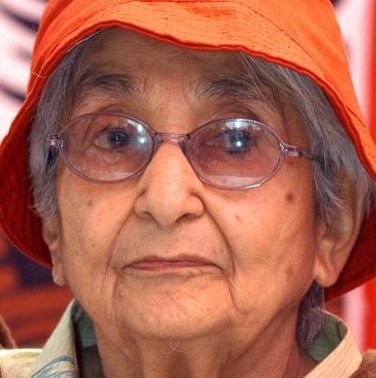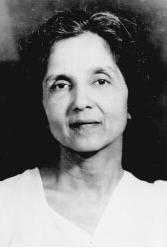Freedom Fighters of India who given us Independence || 6 Unsung Women Heroes of India's Independence Struggle || Biography of Dr. Rajendra Prasad
- Rajendra Prasad was born in Zeradai, District Siwan in Bihar on 3 December 1884.
- His father Mahadev Sahai was a scholar of Persian and Sanskrit. His mother Kamleshwari Devi was a pious lady.
- After receiving elementary education at home from a tutor, he went to the Chapra District School. He won a scholarship to study at the University of Calcutta and joined the Presidency College in Calcutta. He completed his MA in Economics in 1907. While in college, he was an active social activist and joined the Dawn Society and the Servants of India Society.
- After his MA, he pursued a career as a teacher in various institutions following which he pursued a law degree.
- Later, Prasad also won a doctorate in law from the Patna University. In 1916, he commenced his legal career in the Patna High Court.
- Prasad’s involvement in the country’s freedom movement started during his student days when he attended an Indian National Congress session as a volunteer in 1906.
- He joined the organisation in 1911 and a few years later, he met Mahatma Gandhi.
- Inspired by the Mahatma, he quit his legal career and jumped into the freedom movement. He participated in the non-cooperation movement in 1920. He was deeply moved by Gandhi’s dedication and conviction.
- He took an active part in the rehabilitation work after the 1914 floods and the 1934 earthquake in Bihar. During the earthquake, Prasad was in jail and despite that coordinated relief work from there. He was released two days after the earthquake after which he formed the Bihar Central Relief Committee.
- Dr Prasad became the Congress president in 1934 at its Bombay session. He was chosen president once again in 1939.
- He spent almost 3 years in jail after the Quit India Movement.
- When Jawaharlal Nehru formed the Interim Government in 1946, Rajendra Prasad became in charge of the Food and Agriculture Department.
- In December 1946, he was elected as the Constituent Assembly’s President.
- After the Constitution of India was ratified, Rajendra Prasad was chosen to be India’s first President.
- He remained president till 1962 for a period of 12 years. He is the longest-serving president till date.
- In 1962, Prasad retired from politics and public life. He chose to go back to Patna to live his retired life.
- He was awarded the Bharat Ratna in 1962.
- Prasad died in 1963 at the Sadaqat Ashram in Patna. He was 78.
 |
| Freedom Fighters of India Independence 1. Velu Nachiyar (1730-1796) Even before Rani (Queen) Lakshmi Bai of Jhansi who participated in the Sepoy mutiny or India's "first war of Independence," of 1857, Queen Velu Nachiyar ruled the southern state of Tamil Nadu from 1760 to 1790 and fought against the British colonial rule. Born to a royal couple, Mannar Sellamuthu Sethupathy and Sakandhimuthal in 1730 AD, Nachiyar was trained in Indian martial arts, horse riding, archery, and other weaponry. She was also a multi-linguist and spoke English, French, and Urdu, among others.  In 1780, she charged against her enemies with an army she had built along with the help of Sultan (Prince) Hyder Ali of Mysore. Nachiyar is known to have gained control over her kingdom from the clutches of British East India Company. After which, she also formed a woman-only army in memory of her alleged adoptive daughter who died while fighting the British. She is also known to have used the first human bomb. Nachiyar reigned for nearly 10 years before she died of an illness in 1796. 2. Bhikaji Rustom Cama (1861-1936)  Bhikaiji Cama was from the minority, Parsi community of India. A social worker and a philanthropist, she is known to have unfurled the first Indian national flag at the International Socialist Conference in Stuttgart, Germany in 1907 — 40 years before India actually attained Independence. At the conference, she was vocal against the human rights violations committed by the British rulers. A staunch Indian patriot, she declared, “This flag is of Indian Independence! Behold, it is born! It has been made sacred by the blood of young Indians who sacrificed their lives. I call upon you, gentlemen to rise and salute this flag of Indian Independence. In the name of this flag, I appeal to lovers of freedom all over the world to support this flag.” Nearly 1,000 representatives from several countries are known to have attended the conference. Cama's flag was a modified version of the then Calcutta flag and was co-designed by Cama and Shyamji Krishna Varma. Her version of the flag later served as one of the templates for the current Indian national flag. 3. Rani Gaidinliu (1915-1993)  An unsung hero of India's freedom struggle, Gaidinliu was a spiritual and political leader from India's north eastern state of Manipur. At 13, she became influenced by Haipou Jadonang, a religious leader in the region known for his work in reforming the Zealiangrong Naga communities which are a conglomeration of the Zeme, Liangmei and Rongmei tribes. Gaidinliu was arrested in 1932, only to be released 14 years later after India achieved its independence. She was also a strong opponent of India's Partition. Even after her release, she continued to fight for the Naga customs and traditions within united India. 4. Lakshmi Sahgal (1914-2012)  The veteran Indian revolutionary was born in Madras and was a lawyer by profession. She has served in many important positions in the early Indian politics. Sahgal was an officer of the Indian National Army and the minister of women's affairs in the Azad Hind government.
In 1940, after her failed marriage, she arrived in Singapore, where she was introduced to the known Indian revolutionary, Subhash Chandra Bose and the Indian National Army, INA. While in Singapore, she established a clinic for the migrant laborers from India who couldn't afford health care. Her keenness to help with India's freedom movement led her to join forces with Bose and form a woman's regiment known as "Rani of Jhansi" regiment within the INA. The all-woman brigade was warmly received and Sahgal came to be known as "Captain Lakshmi" from there on. While marching to Burma in the December of 1944, along with the Japanese army who allied with the Indian army to fight against the British, Sahgal was held captive by the British army in May 1945 and remained in Burma until March 1946. She was later sent to New Delhi as part of the INA trials. Sahgal joined the Communist Party of India (Marxist), CPI-(M), in 1971 and represented the party in India's upper house, Rajya Sabha. Later she went to Bangladesh, where she organized relief camps and provided medical aid to refugees coming to India from Bangladesh during the genocide where West Pakistan began a military crackdown on the East to suppress the Bengalis' call for independence. 5. Aruna Asaf Ali (1909- 1996)  Born in the present-day state of Haryana to a Bengali family, Ali was also known as the "Grand Old Lady of the Independence Movement " was known for her revolutionary role in the Quit India movement of 1942. She was arrested in 1931 for participating alongside Mahatma Gandhi in the public processions, called Salt Satyagraha, that loosely translates to "insistence on truth," a major civil resistance movement. Even during her time in New Delhi's Tihar jail, she protested the British authorities' inhuman treatment of political prisoners. Ali launched a hunger strike that eventually led to significant improvement in jail conditions at the time. Due to her role in the strike, she was moved to another jail and placed in solitary confinement. After Independence, she quickly joined the Congress Socialist Party, a caucus within the Congress Party with socialist leanings but disillusioned she left and after giving Socialist Party a chance, Ali finally joined the Communist Party of India in the early 1950s. She along with her husband founded The Patriot, a Soviet Union-leaning newspaper in 1962. Moscow awarded her the Lenin Peace Prize in 1965. ''My colleagues and I had decided we would not beg for freedom — we would fight for it,'' Ali's known to have said during her freedom fighting days. 6. Kanaklata Barua (1924-1942)  Kanaklata Barua also known as Birbala, was an Indian revolutionary from the state of Assam in India's North east. She joined Mrityu Bahini, a youth-led death squad from the Gohpur sub-division of Assam. She was shot dead at the age of 17 by a British army official while she was leading a procession bearing the Indian National Flag during the Quit India Movement of 1942. |

Is it helpful
ReplyDeleteYesss
DeleteNice blog 👍
ReplyDelete